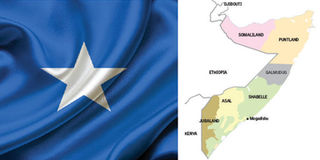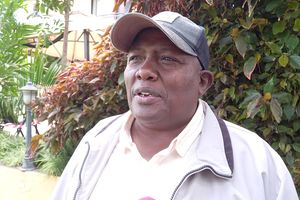Premium
Nostalgia as Somalia celebrates 60 years unique ‘independence’

Somalia marks 60 years of independence and the birth of the Republic of Somalia after former British Somaliland Protectorate and the Southern Somalia under Italian rule merged on July 1, 1960. TEA GRAPHIC | NATION MEDIA GROUP
What you need to know:
The country gradually turned into a battlefield and highly indoctrinated clerics turned mosques into platforms to voice out a strict application of Islamic laws. Armed rebels and religious zealots continued their campaign to weaken the government.
MOGADISHU
July 1 will always be a memorable day in Somalia’s history.
It does not only symbolise the end of the Italian rule in the southern regions, but is also the day the former British Somaliland Protectorate and the Italian-governed Somali territory united to form the Somali Republic, thus called the Unity Day.
British Somaliland had gained independence from the UK five days earlier on June 26, 1960, with Somalis earning their share of the glorious Year of Africa.
After week-long jubilation, the united country in the Horn of Africa started a journey, exercising the democracy inherited from the two colonial powers.
To start with, the two legislative assemblies, 33 members in the north (former British territory) and 90 from the south (former Italian Somalia) were united to form a national assembly in Mogadishu, the seaside city chosen to become the state capital.
Within its first year of independence, the new nation approved its constitution via a referendum, enacting that the power to run the country belonged to the people.
In just nine years, Somalia had managed three general elections that resulted in the two presidents and three prime ministers.
Equally remarkable was that the second prime minister, Mr Abdirizak Haji Hussein, at one point, lost a vote of parliamentary confidence. His president, the legendary Adan Abdulle Osman, affectionately known as Adan Adde, had confidence in Mr Hussein and asked him to continue the premiership through cabinet restructuring.
When Adan Adde’s presidential term ended in 1967, he stood for reelection. He was challenged by his first Prime Minister Abdirashid Ali Sharmarke, to whom he lost, following three rounds of voting by the 123-member legislative.
Mr Sharmarke chose Mr Mohamed Ibrahim Egal to lead the executive as premier.
Equally memorable is that within a year and half, the nation had to go for its third General Election as the term of its second assembly ended in March 1969.
As the leader of the ruling Somali Youth League (SYL) Party, Egal led a successful election, gaining a majority of parliamentary seats for his party. He was reappointed as premier.
As Somalia was heading towards the end of its first decade under democratic rule, many parts of Africa were being infested with army interventions. Military rules were emerging, almost overnight.
The army officers in Somalia, perhaps saw themselves as lagging behind, and sought to take over power. Things have never been the same again/.





